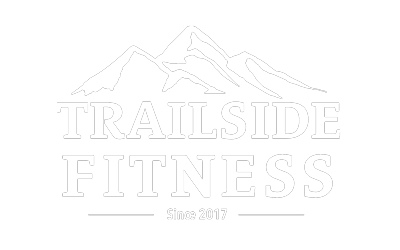The Science of Trail Legs
Have you ever heard hikers talk about getting their trail legs? Ever wonder just what that means? Read on my bipedal friends to learn the science of trail legs!
The Science-y Bit
 Neuromuscular adaptation is the name of the game here. This term refers to the nerves from your spinal cord that connect to the muscles. When the signal is sent from the brain down the spinal cord and through the nerve, the muscle contracts.
Neuromuscular adaptation is the name of the game here. This term refers to the nerves from your spinal cord that connect to the muscles. When the signal is sent from the brain down the spinal cord and through the nerve, the muscle contracts.
Your body will only maintain as many of these nerve/muscle connections as it needs for your daily activity level and no more. The body is extremely efficient in terms of energy usage.
Muscle takes a lot of energy to build and maintain. If you weren’t using as much muscle as your body has primed and ready for action, your body will start to save energy by decreasing the nerve activity to the unneeded portion of the muscle. Simple and effective right?
Download the free article on ways that you can improve your odds of being successful during your through hike!
The body is a master compensator
 What happens when you skip the gym for too many weeks? The body recognizes that you aren’t using/engaging the muscle you have. To conserve resources, it reduces the number of active nerves that feed the muscle.
What happens when you skip the gym for too many weeks? The body recognizes that you aren’t using/engaging the muscle you have. To conserve resources, it reduces the number of active nerves that feed the muscle.
You engage less of muscle but keep enough activated to meet your needs. You remain blissfully unaware that any of this is happening until you step back into the gym and realize that you lost strength.
Getting your trail legs
The process of neuromuscular adaptation takes place over the first few weeks while on the trail. Interestingly, it also happens to be the time frame that most injuries occur on the trail – more on that later.
With the increase in physical activity (like hiking every day) the body will maximize the muscle you already have by “un-muting” the nerves to turn it on. You don’t get stronger in the traditional sense during the first month of hiking (or working out).
What you have done is activate more muscle fibers that were not previously needed, improving muscular efficiency.
If conditions are optimal, (energy intake and physical stressors like exercise are consistent) your body will begin to build muscle to meet the needs. This happens around week 4-8 for most of us.
Studies vary on this timeframe, some say closer to 8-12 weeks and possibly longer. There are a lot of factors to consider: age, nutrition, sleep, training history, or any other health conditions.
Back to that injury piece in the first few weeks. If you start your hike with strong, efficient muscles you are starting with greater resiliency to buffer against common hiker injuries. Â Give yourself 12-16 weeks of consistent workouts before you hit the trial for best results!
To learn about our online training program, click here.
You can reach me info@trailsidefitness.com with any injury issues, past or present that you feel will impact your hike. Training questions are also welcome – I am happy to help!
Be sure to like our Facebook page and follow us on Instagram and Twitter!

Recent Comments